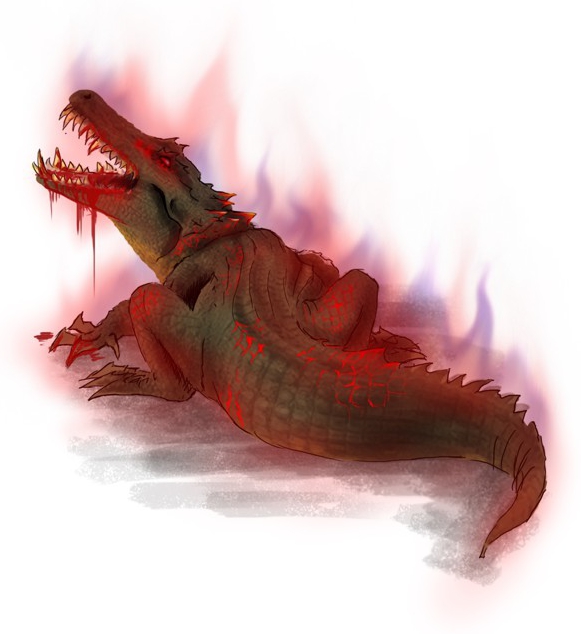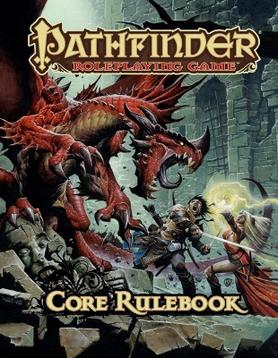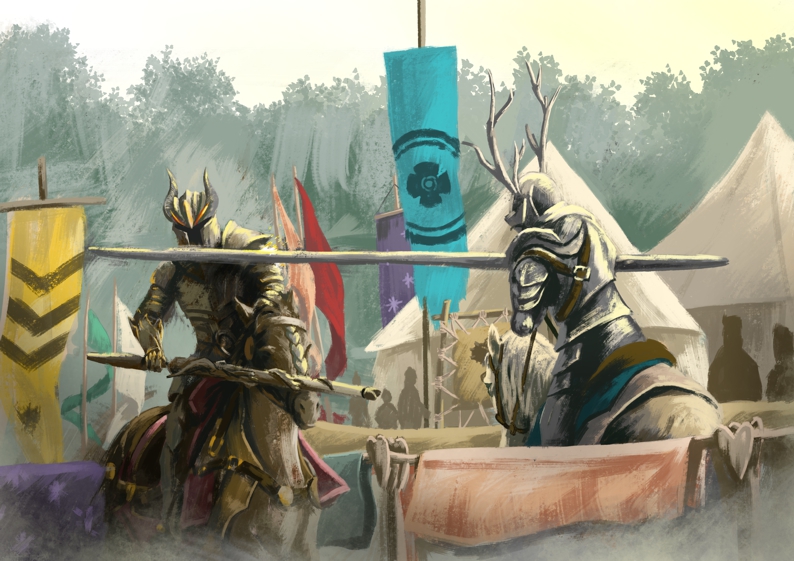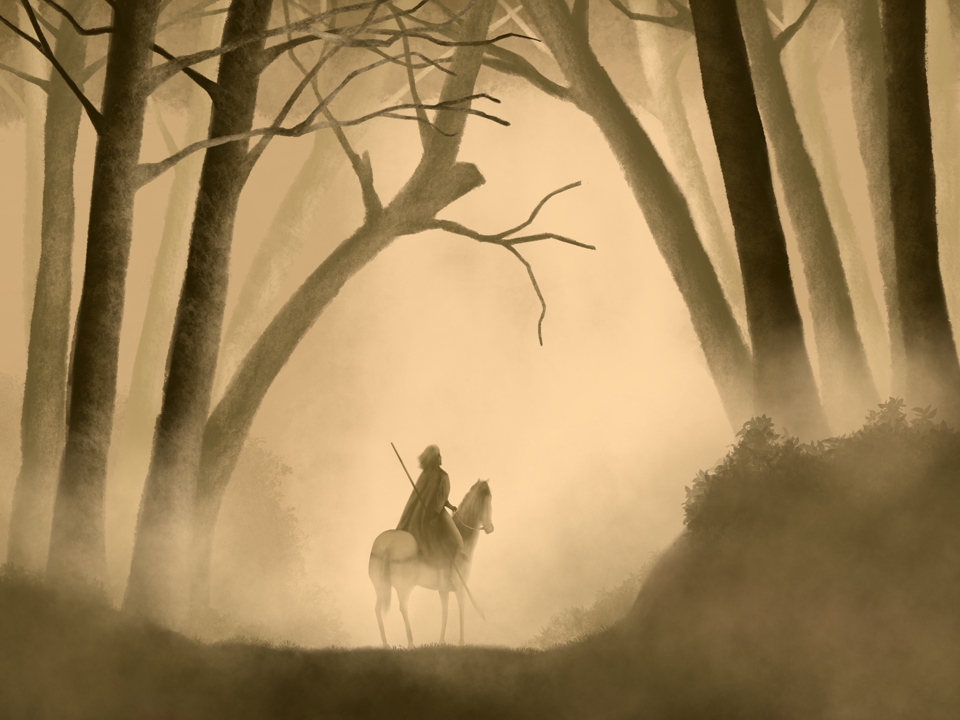Need a challenging solo monster for your 5E game? Here’s a fantastic construct that can dominate the battlefield.
Clockwork War Dragon
STR 23 (+6) | DEX 16 (+3) | CON 21 (+5) | INT 10 (+0) | WIS 8 (-1) |CHA 19 (+4)
Passive Perception 18
Immutable Form. The clockwork war dragon is immune to any spell or effect that would alter its form.
Magic Resistance. The clockwork war dragon has Advantage on saving throws against spells and other magical effects.
Magic Weapons. The clockwork war dragon’s weapon attacks are magical.
Actions
Multiattack. The clockwork war dragon makes three attacks: one with its bite and two with its claws.
Bite. Melee Weapon Attack: +10 to hit, reach 10 ft., one target. Hit: 17 (2d10 + 6) piercing damage plus 3 (1d6) fire damage.
Claw. Melee Weapon Attack: +10 to hit, reach 5 ft., one target. Hit: 13 (2d6 + 6) slashing damage.
Fire Breath (Recharge 5–6). The clockwork war dragon exhales fire in a 30-foot cone. Each creature in that area must make a DC 17 Dexterity (Acrobatics) saving throw, taking 56 (16d6) fire damage on a failed save or half as much damage on a successful one.
Reactions
Clockwork Stalwarcy. If the clockwork war dragon is knocked prone, it immediately rights itself without a movement penalty. It executes a counter-knockdown, and the attacker that knocked it prone must make a DC 17 Strength (Athletics) saving thrown or be knocked prone themselves.
Legendary Actions
The clockwork war dragon can take 3 legendary actions, choosing from the options below. Only one legendary action option can be used at a time and only at the end of another creature’s turn. The dragon regains spent legendary actions at the start of its turn.
Force Eye Beams. Glowing red darts of Ethereal force launch out of the clockwork war dragon’s eyes. Each dart hits only one creature of its choice that it can see within 120 ft. Each dart deals 1d4 + 1 force damage to the target. The darts strike simultaneously and are a single attack.
The clockwork war dragon prioritizes unconscious targets with its eye beams, inflicting 2 failed Death Saves on an Eye Beam attack.
Death Spiral Tail Launch. The clockwork war dragon launches its tail at any target within 30ft. Melee Weapon Attack: +10 to hit, reach 30 ft., one target. Hit: 13 (2d6 + 6) piercing damage. The target must make a DC 17 Saving Throw or be knocked prone. Once the attack is complete, the tail retracts back into the clockwork war dragon’s body.
The clockwork war dragon prioritizes unconscious targets with its tail launch attack. If the attack renders an attacker unconscious or if the victim is already unconscious, then upon a successful attack, the tail skewers the victim and retracts, bringing the body to its metal jaws. The clockwork war dragon then bites the quarry in half, killing it instantly.
Spike Launch. Each creature within 15ft. of the clockwork war dragon must make a DC 17 Dexterity (Acrobatics) saving throw, taking 8 (2d8) piercing damage on a failed save or half as much damage on a successful one.
Description
The terrible clockwork war dragon is part flat-black scaly flesh, part clockwork, in the shape of a dragon, designed as a killing machine from days long past. Once awakened, the construct goes active.
The construct, absent any coded telepathic commands from its long-dead makers, will rampage until destroyed. At one time, these creatures had extensive programming, but the relentless march of time has degraded its ability to function as an intelligent war machine. While it can leap and fly about, if it “decides” that a target needs neutralizing, it will engage in bite-range combat at the expense of using the landscape or aerial combat to its advantage.
Once in combat, the clockwork war dragon fights to the death.
Stalk Mode
Sometimes, due to its malfunctioning thought process, the construct will go into “stealth” mode and skulk about an area, usually at night. It will decide which creature in this arbitrary area poses the greatest threat and attack from the shadows, opening with a breath weapon attack.
The Tragic Nature of the Clockwork War Dragon
While it can receive telepathic communication, its creators designed the construct to respond to an encoded language. They did not give the clockwork war dragon the ability to speak back. However, over the centuries, this tragic monster “leaks” strange visions of symbols, a trait it acquired to make sense of the relentless loneliness it developed after its creators abandoned it.
If an expert in Arcana or Medicine examines the corpse of the construct once it is defeated, a DC 20 Intelligence (Arcana) or Wisdom (Medicine) will reveal the flesh of the creature was at one point an actual dragon, the brain removed in the process of magically fusing its body with the construct.
You can find the Clockwork War Dragon on D&D Beyond by clicking here: https://www.dndbeyond.com/monsters/1246836-clockwork-war-dragon.
Behind the Scenes and Playtesting

We designed the Clockwork War Dragon as a Deadly encounter, and in the final playtest, the construct killed one PC and brought the party to the brink of a TPK. A Deadly encounter is an encounter that has a reasonable chance of killing half the party. In the playtest that dropped a PC, the Clockwork War Dragon was unable to rechange its breath weapon–but if it did, it’s a mathematical certainty half the party would have died. If the recharge brought down the party’s remaining healer, the Clockwork War Dagon would have finished off the survivors. A TPK.
Death Spiral Design
A bad decision, panic, poor teamwork, and of course, bad dice rolls can start a “death spiral” at the game table. This monster has the tools to kill unconscious victims (in 5E, PCs making Death Saves), both up close and at range. PCs that take damage from a successful attack and are Unconscious automatically fail two Death Saves.
In lore, the people creating this construct were both merciless and desperate. Clockwork War Dragons weren’t the worst thing they created, but they were one of their most effective killers, going so far as to dominate an encounter with an enemy and then hunt down fleeing opponents one-by-one.
As a DM, before using this monster in an encounter, think about the challenge outside of its mathematical rating. D&D is a game. Games have win and fail conditions; otherwise, it would not be a game but a convenient “story-telling” device. This monster was used in play-testing in a campaign–the players had an understanding that something bad was going to happen, so they prepared appropriately. And that’s exactly what happened–something bad.
The players enjoyed that encounter and now suspect that something awful happened to the people who used to inhabit their lands long ago. If those bygone people created this monster, what else did they create? And why? Looking at the clockwork strewn about the battlefield, the PCs have more questions than answers–and they are not sure they want the answers.
Good players need a good challenge, and a good challenge is possible within the confines of the rules for creating monsters without a bunch of tricks, hand-wavum, or tossing waves of monsters at the PCs until one drops. Often you hear that 5E is too forgiving as a rule system. This is definitely not true. What is true is that many DMs are too forgiving. Well, and the DMG doesn’t give proper guidance in creating encounters and monsters based on player makeup and role-playing game theory.
Here are the particular attributes that make the Clockwork War Dragon a formidable opponent:
Challenging Attributes
- Fire breath weapon: this is a young red dragon’s breath weapon, with a standard rechange on a 5 or 6 on a six-sided die, rolled at the beginning of its round
- As a construct, it is resistant to all forms of magic via its magic resistance in addition to other immunities and resistances
- The physical attacks also come from a young red dragon and are specific to a CR 10 monster.
- The cunning action bonus action ability adds a high degree of versatility, and deadliness, to this monster. It can move around the battlefield or even hide in gloomy terrain each round, like a rogue.
- Its reaction is specific to its clockwork nature: the clockwork war dragon creators did not want to make it any bigger than a Large creature. Knowing that other Large creatures could knock it about, they gave it an “anti-prone” counter-attack.
- The monster’s legendary actions separate this beast from a CR 10 monster template, adding to the challenging rating appropriately. When there are no unconscious PCs on the battlefield, they serve as extra damage per round. When a PC goes unconscious, it uses them to kill a PC and remove him or her from the battle, as it was designed to do as a war machine.
- Finally, the Clockwork War Dragon does not communicate. It cannot be bargained or reasoned with. It exists only to kill and destroy, and a tiny part of it wishes someone, anyone, would put it out of its misery.
Alternate Versions
A fallen kingdom or empire created the Clockwork War Dragon long ago. However, it would be easy to modify the beast as a new creation for a supervillain’s minion. Increase it’s Wisdom to 12 and raise it’s Survival Skill to +7. Here it becomes a relentless tracker.
Another modification would be to add a swim speed and the amphibious trait.













